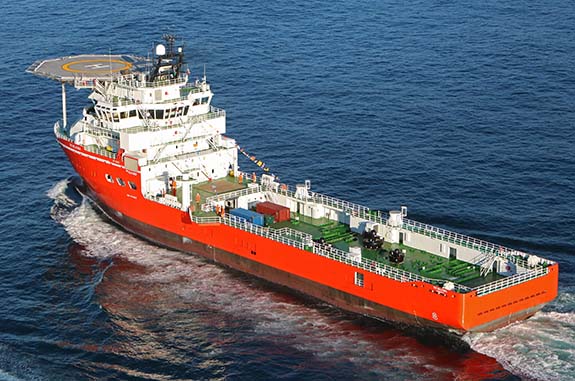The De Beers Group confirmed that construction has begun on the world's largest diamond mining vessel. When it reports for duty in 2021, the 577-foot technological marvel will be extracting diamonds from the ocean floor near the coast of Namibia at a depth of 400 feet.

After more than eight decades of producing a staggering 2 million carats per year, the land-based diamond operations in Namibia are nearly mined out. Fresh sources of diamonds were discovered off the coast of Namibia, so new investments by De Beers and its partner — the Republic of Namibia — have been aimed offshore. A few decades ago, it would have been unfathomable for diamond companies to pursue deep-sea mining. But breakthroughs in technology are making this type of project viable and lucrative.

The grand vessel — the sixth in De Beers' Namibian fleet — is being built in Norway by a firm called Kleven Verft at a cost of $173 million. Mission equipment, including crawler-mounted dredge technology, will cost an additional $432 million. The ship will look similar to the mv SS Nujoma (shown above and below), which was also built by Kleven Verft. Launched in the summer of 2017, the mv SS Nujoma is the world’s largest diamond sampling and exploration vessel. The $157 million ship is credited with greatly improving the company's ability to target its mining activities.

The sea-based operation is called Debmarine Namibia and the reason the group is willing to make such a massive investment in a sixth mining ship is because of the treasures waiting on the ocean floor.
According to De Beers, 95% of the diamonds pulled from the seabed near Namibia are of gem-quality. This compares to just 20% of gem-quality diamonds coming from De Beers’s top mine in Botswana. Some experts surmise that the diamonds in the ocean have endured such a pounding for so long that only the gem-quality ones could remain intact.
The new ship will employ a super-powerful vacuum that will scour the ocean floor, sucking up tons of diamond-bearing gravel each hour and bringing it to the surface. On the ship, X-ray machines and other diamond-sorting devices will separate the gems from the worthless gravel. According to The Wall Street Journal, the mining operation yields a handful of diamonds for every 180 tons of material processed.
Debmarine Namibia has licensed an area that covers 3,700 square miles. It starts about three miles offshore and extends seaward 10 to 20 miles. The diamond concession is expected to yield more than a million carats per year for the next 50 years.
Credits: Images courtesy the De Beers Group.
No comments:
Post a Comment